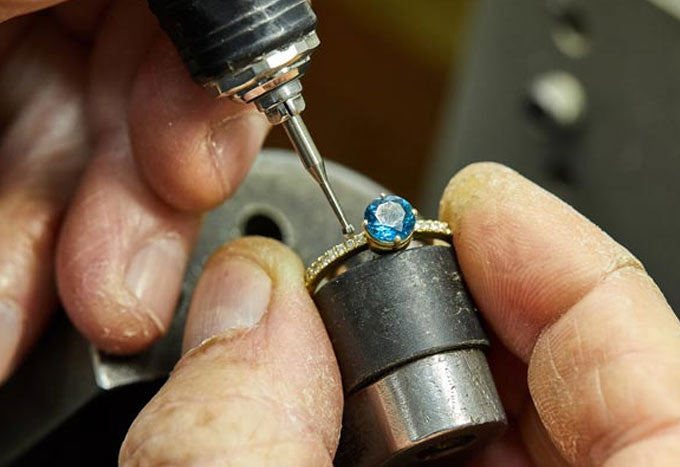1. Stone Replacement:
Stone replacement involves removing a damaged, lost, or unwanted gemstone from a piece of jewelry and replacing it with a new one. This could be due to the original stone being chipped, cracked, or simply no longer desired.
: The jeweler carefully removes the damaged or missing stone, ensuring minimal damage to the setting.
: The replacement stone is selected, which could be a gemstone of the same type (e.g., diamond, sapphire, ruby) or a different one, depending on the customer’s wishes and the setting’s compatibility.
: Once a stone is chosen, it’s set securely into the mounting, ensuring it fits properly.
Stone replacement is common for diamonds or other precious stones that may have been lost or damaged over time, as well as when someone wants to upgrade or change the look of their jewelry.
2. Stone Setting:
Stone setting is the technique used to secure a gemstone into a piece of jewelry. There are several different methods of setting stones, and the choice depends on the type of jewelry, the size of the stone, and the desired look. Some of the most common types of stone settings are:
: This is one of the most common settings for rings, especially for diamonds. The stone is held in place by metal prongs, which grip the stone’s edges. This allows light to enter from all angles, maximizing the stone’s brilliance.
: In this setting, the stone is surrounded by a metal band that encircles the edges of the gemstone, holding it securely. This setting is particularly good for protecting stones, as they are less likely to become loose.
: Small stones are set very closely together, creating a continuous surface of gems, often with minimal visible metal. This setting is popular for creating a "halo" effect around a central stone or for adding sparkle to an entire piece.
: Stones are set in a groove or "channel" in the metal, with no prongs holding them. This is often used for rings and bracelets, where stones are set in a row, creating a smooth and continuous look.
: The stone is held in place by the tension of the metal band itself, giving the illusion that the stone is floating. This setting is modern and gives a very sleek, minimalistic appearance.
: Similar to bezel setting, but the stone sits directly flush with the metal. The surface is smooth and the stone is recessed slightly into the setting, offering a secure and sleek look.
Stone setting requires careful precision to ensure the stones are secure and not at risk of falling out. A skilled jeweler will consider the stone's size, shape, and the style of the piece when selecting the appropriate setting method.
When Would You Need Stone Replacement or Setting?
: If a stone is damaged or missing, such as a chipped diamond or a lost sapphire, you might need to replace it.
: If you’re getting a new piece of jewelry made or redesigning an existing one, stone setting is part of the process to ensure that gemstones are securely embedded into the design.
Are you looking to replace a stone or perhaps change the setting of a piece you already own? I'd be happy to help guide you through any questions you have!


